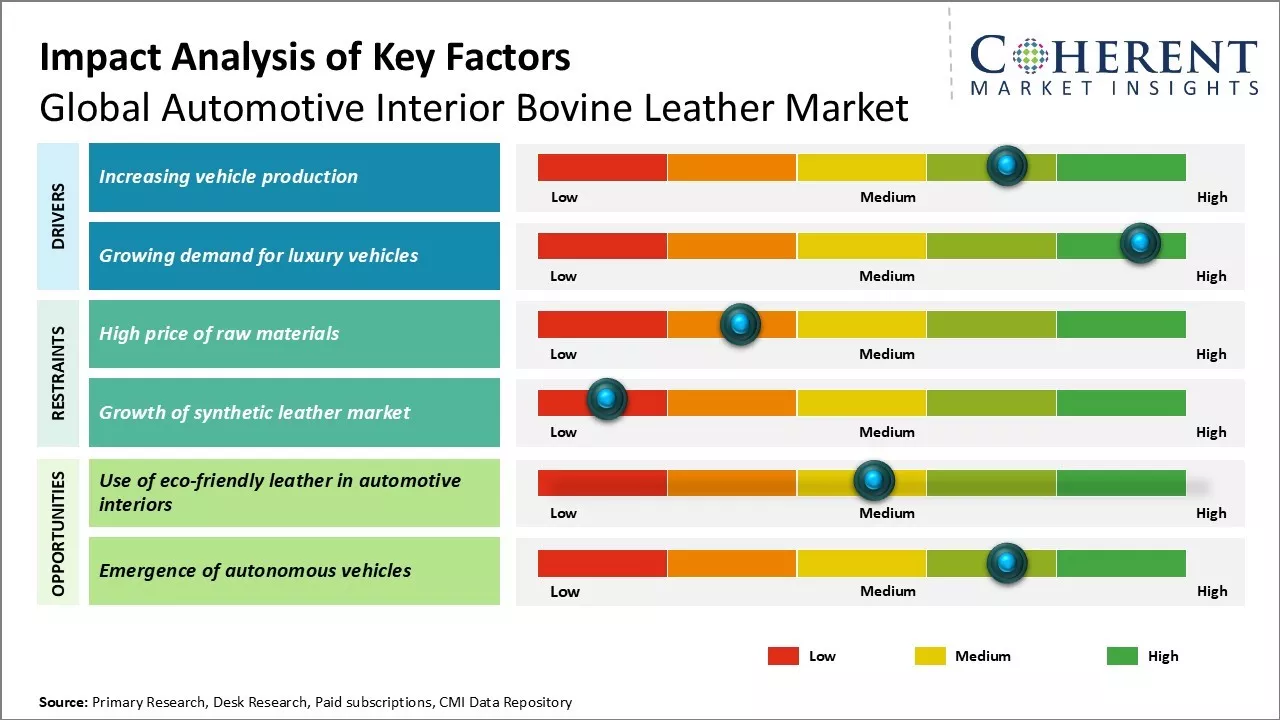Global automotive interior bovine leather market is estimated to be valued at US$ 34.12 billion in 2025 and is expected to reach US$ 52.70 billion by 2032, exhibiting a compound annual growth rate (CAGR) of 6.4% from 2025 to 2032.

To learn more about this report, Request sample copy
Increasing production of passenger vehicles globally along with growing demand for luxury and premium vehicles amongst consumers can drive the market growth. Key players in the automotive industry are focused on developing high-quality and aesthetically appealing leather interiors for vehicles in order to enhance the consumer experience. Rising discretionary income levels of consumers can also drive the preference for leather seats over regular fabric seats in vehicles in the near future. However, increasing adoption of synthetic and vegan leather materials amid sustainability concerns can hamper the market growth.
Joining thousands of companies around the world committed to making the Excellent Business Solutions.
View All Our Clients